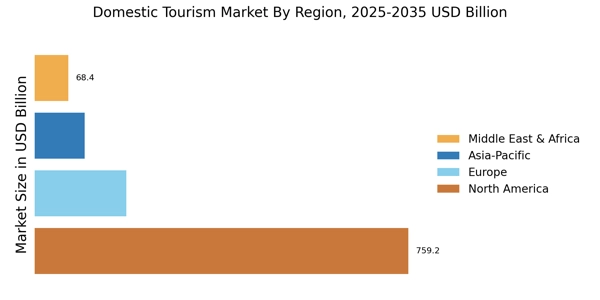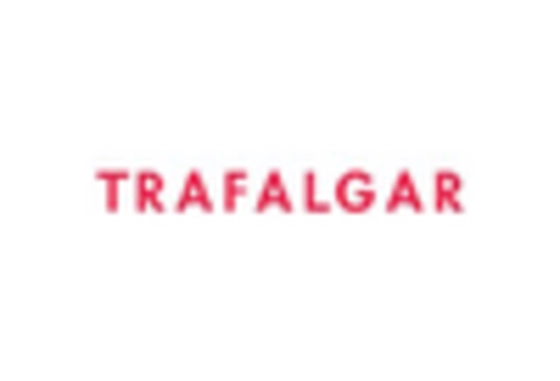Focus on Health and Wellness Tourism
The Domestic Tourism Market is increasingly embracing health and wellness tourism as a key driver of growth. There is a rising awareness of the importance of mental and physical well-being, prompting travelers to seek destinations that offer wellness retreats, spa services, and outdoor activities. Recent statistics reveal that wellness tourism is projected to grow by 10% annually, indicating a robust interest in health-focused travel experiences. This trend is particularly appealing to domestic tourists who are looking for rejuvenation and relaxation within their own countries. As a result, the Domestic Tourism Market is adapting to this demand by promoting wellness-oriented packages that cater to health-conscious travelers, thereby expanding the range of offerings available.
Growing Interest in Local Experiences
The Domestic Tourism Market is witnessing a surge in demand for authentic local experiences. Travelers are increasingly seeking to immerse themselves in the culture, traditions, and culinary offerings of their own regions. This trend is reflected in the rise of community-based tourism initiatives, which promote local artisans and businesses. Recent surveys suggest that approximately 65% of domestic travelers prioritize experiences that allow them to engage with local communities. This shift not only enhances the travel experience but also supports local economies by directing funds to small businesses. As a result, the Domestic Tourism Market is adapting to this demand by offering tailored packages that highlight local attractions and experiences, thereby fostering a deeper connection between travelers and their destinations.
Technological Advancements in Travel Planning
The Domestic Tourism Market is increasingly influenced by technological advancements that streamline travel planning. The proliferation of mobile applications and online platforms has transformed how travelers research and book their trips. Data indicates that over 70% of domestic travelers utilize mobile devices for travel-related activities, from itinerary planning to booking accommodations. This shift towards digital solutions not only enhances convenience but also allows for personalized travel experiences. Moreover, the integration of artificial intelligence in travel apps is enabling more tailored recommendations based on user preferences. As technology continues to evolve, the Domestic Tourism Market is likely to see a further increase in tech-savvy travelers who expect seamless and efficient travel planning processes.
Environmental Awareness and Sustainable Practices
The Domestic Tourism Market is increasingly shaped by environmental awareness and a growing emphasis on sustainable practices. Travelers are becoming more conscious of their ecological footprint and are actively seeking eco-friendly options. Recent studies indicate that approximately 55% of domestic tourists prefer accommodations that implement sustainable practices, such as energy efficiency and waste reduction. This shift is prompting businesses within the Domestic Tourism Market to adopt greener practices, from eco-lodges to sustainable tour operators. As sustainability becomes a priority for travelers, the Domestic Tourism Market is likely to evolve, with an increasing number of offerings that align with environmentally responsible values, thereby attracting a conscientious consumer base.
Increased Accessibility and Infrastructure Development
The Domestic Tourism Market is experiencing a notable enhancement in accessibility due to ongoing infrastructure development. Governments are investing in transportation networks, including roads, railways, and airports, which facilitates easier travel for domestic tourists. For instance, recent data indicates that investments in regional airports have increased by 20% over the past two years, significantly improving connectivity to remote destinations. This trend not only encourages travel to lesser-known areas but also supports local economies. Enhanced infrastructure is likely to attract a broader demographic of travelers, including families and older adults, who may have previously found travel challenging. As accessibility improves, the Domestic Tourism Market is poised for growth, with more individuals likely to explore their own countries, thereby enriching their travel experiences.


















Leave a Comment